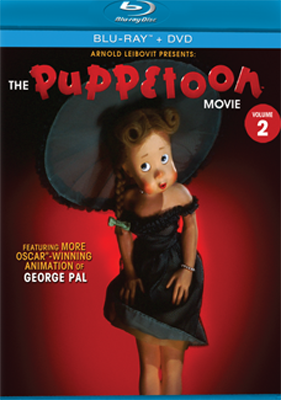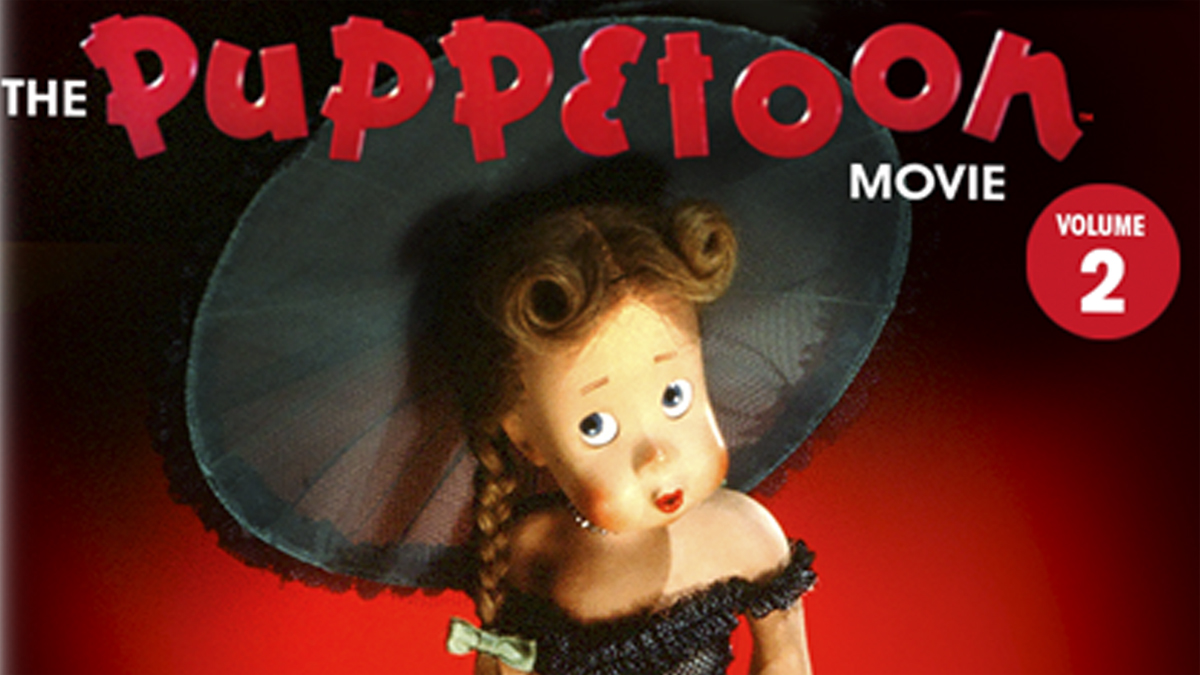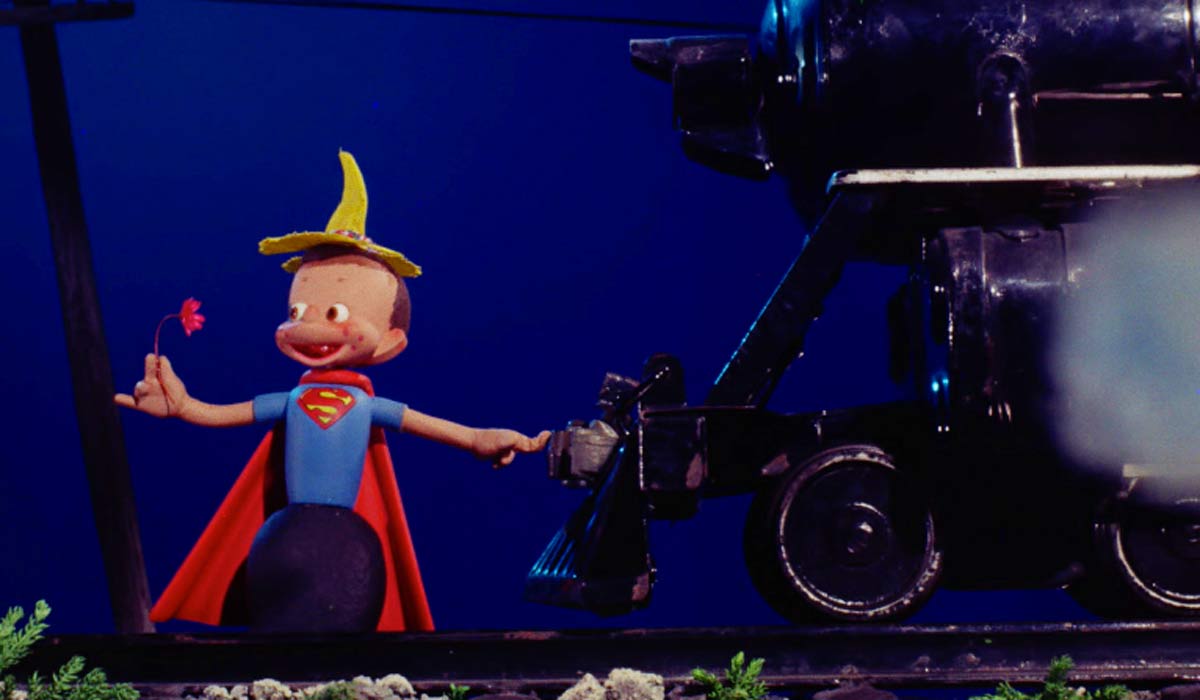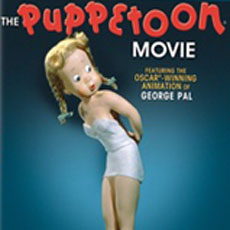We at Animated Views are great admirers of the films of George Pal, the Hungarian born master of science fiction and fantasy who made his mark in Hollywood. Films such as War Of The Worlds and The Time Machine are classics of the genre. Pal’s earliest film endeavors were in animation, including the incredible and marvelous replacement puppet shorts known as Madcap Models, or more commonly Puppetoons. A number of those shorts were shown in the compilation feature The Puppetoon Movie (1987), a film that also utilized new bridging sequences featuring Gumby and other characters. The Blu-ray of that film was our Disc Of The Year for 2013. (You may read our review of that disc here.) We described that Blu-ray as being “truly a love letter to one of our favorite filmmakers of all time.”
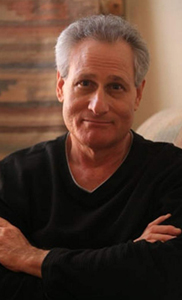 The man chiefly responsible for promoting the legacy of George Pal over the past few decades is film producer Arnold Leibovit. Leibovit considers his documentary The Fantasy Film Worlds Of George Pal to be his most significant film, and he was also the producer of The Puppetoon Movie, as well as 2002’s The Time Machine remake. Currently, he is overseeing the remastering of a large number of Puppetoon shorts that have not been seen in several decades, including some never seen at all outside of Europe. Some shorts have already been restored and remastered, while others are being worked on by Thunderbean’s Steve Stanchfield. The first batch of shorts will appear in The Puppetoon Movie Volume 2, and subsequent volumes are planned. In order for this to be achieved, Leibovit has set up a website at www.scifistation.com/puppetoon2.html to request donations and preorder the forthcoming Blu-ray.
The man chiefly responsible for promoting the legacy of George Pal over the past few decades is film producer Arnold Leibovit. Leibovit considers his documentary The Fantasy Film Worlds Of George Pal to be his most significant film, and he was also the producer of The Puppetoon Movie, as well as 2002’s The Time Machine remake. Currently, he is overseeing the remastering of a large number of Puppetoon shorts that have not been seen in several decades, including some never seen at all outside of Europe. Some shorts have already been restored and remastered, while others are being worked on by Thunderbean’s Steve Stanchfield. The first batch of shorts will appear in The Puppetoon Movie Volume 2, and subsequent volumes are planned. In order for this to be achieved, Leibovit has set up a website at www.scifistation.com/puppetoon2.html to request donations and preorder the forthcoming Blu-ray.
We recently spoke with Mr. Leibovit about George Pal and his amazing legacy, as well as The Puppetoon Movie projects. Read ahead to learn more about Mr. Pal, his Puppetoons, and his relationship with other pillars of animation such as Max Fleischer and Walt Disney.
AV: With the first Puppetoon Movie having been released over 30 years ago, why was it that it took this long for Volume 2 to come out?
AL: When I did the first project, there were a lot of Puppetoons that were unavailable, primarily the Paramount Puppetoons. They weren’t at Paramount at the time. They were at Republic Pictures, and I was trying to get the clearances to do some of those Puppetoons. I think they knew they were eventually selling the library, and they didn’t want to break them up. So, that was number one— I didn’t have access to a number of subjects. And then there were a number of subjects that I didn’t even know existed. As far as anyone was concerned, they were lost subjects.

And it wasn’t like I spent thirty years thinking about the project. What happened was, after we did the Blu-ray (for The Puppetoon Movie), I was just wondering if any more of those subjects were around. And I happened to be on a long-distance call to Europe, which is where a lot of these archives are, and it turns out that a number of European films had turned up. It was a revelation to me that they existed. Nobody’s ever seen these films before. I hadn’t seen most of them, Americans hadn’t seen these films. There were a number of films that were thought to be lost. And I found four them, though not all of them will be on this disc. Ali Baba And The Forty Thieves I found in the BFI. They didn’t even know they had it. And that’s the problem. A lot of the archives that have these things don’t even know what they have. And once I identified the materials, they went, “Oh my God,” and it was like a revelation to them too.
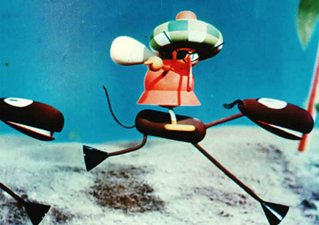
AV: That’s amazing.
AL: Yeah. So, part of it has to do with synergies coming together. Things don’t always happen the way you want them to. Y’know. Timing is the thing. It can take a long time for a variety of reasons. And the reason here was, the material wasn’t available, and it became available. It wasn’t something I was thinking of doing immediately, but it became obvious that I needed to get this done. I wanted to do more, so I decided to put this together. So, what we’ll do is we’ll put part of them on Volume 2, and part of them will be on a Volume 3. Depending on how much money is raised, depending on how it does, I can put money into the next one. I may have to do more funding. And maybe there will be a Volume 4, I don’t know. So, it just depends.
AV: What have you been up to for the past thirty years?
AL: Well, of course I did that Time Machine remake in 2002. So, I was working on that film. That took a long time, too. The industry works in mysterious and slow ways. But I was on top of Time Machine for many years. I got the rights from Mrs. Pal, and she let me stand in Mr. Pal’s shoes to make the film, and it took a number of years, and eventually became the film that you know. It came out, and I was trying to get other films going since then. It seems like any time you want to do a film, it takes twenty years. I don’t’ know. But we’re doing another one now, of course. The director of It, Andy Muschietti, was a big fan of Time Machine, so we’re involved in another project, and it looks like it’s a go at Warner Bros.
I know there’s a lot of years there. I know. (Laughs.)
AV: What is your own background?
AL: I grew up in Florida. I was born in Miami Beach. My grandmother was Hungarian. My father came from Russian descent. And that was where I spent most of my youth, really. And I saw most of George Pal’s movies as a kid in Miami. When I was growing up, his name – for me – was synonymous with fantastic cinema. His name was like Walt Disney. For anyone who grew up in the 50s like me, George Pal meant a big movie. Pal was making epic films – big, colorful large-budget movies. I knew the name George Pal like I knew Walt Disney. So, when a Pal film came out, I was anxious to see the film, as were many people of that time. This was the fifties, you know, and the early sixties.

AV: Were you aware of his own Hungarian background?
AL: I wasn’t aware. I didn’t’ know the details of his life fully until serendipity happened to me. One of many projects I was working on was a film I was going to direct – a monster movie, a Jaws on land kind of movie. And I was in LA, and I was friends with Dan O’Bannon, who did Alien, I was friendly with him, and he helped me do designs for the film with Ron Cobb, who worked on Alien. And he said, you should take this to George Pal. And I said, “Is he alive?” Because I hadn’t been following him at that point. This was 1979, the year before Pal died. And so it was arranged for me to meet him.
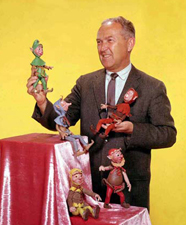
And so I met him at his house in Beverly Hills. And it was life-changing for me. I didn’t expect for it to happen, and I didn’t expect for him to make such an impression on me. It brought back all of my childhood memories of him as a kid, and here I am sitting in his living room. All his Oscars are lined up on the wall and all his puppets. And in walks this very sweet Hungarian man, y’know, very self-effacing. And he helped, he advised me on the project, he helped me, and I stayed in touch with him for the better part of a year, before he died. And even then, the part with him being Hungarian didn’t connect; I didn’t have a sense of a connection. It wasn’t until I was in touch with Mrs. Pal.

I was in touch with her as soon as George died. I had called over at the house and I told her how badly I felt about his passing. It struck me really hard. And then I recognized the Hungarian accent. Zsoka was her name, Elizabeth in English, and then I struck up a 25-year relationship with her. She was like my second mother. And I told her we really needed to do something for George. And in your life, things like this don’t just happen by accident. There are things you can do in life – things you have a great desire to do, or things that are a good idea, but you don’t do them because it’s a big undertaking to do a project, any project, it’s an enormous undertaking. But, for some reason I was driven by this, and told her we need to do something. And it was four years later that I came out to Hollywood and I told her, okay, I want to make the film. Nobody had done anything.
This was The Fantasy Film Worlds Of George Pal, the documentary. This was 1983/’84. And I sort of showed up, I didn’t have very much money, and I kind of pulled it together and she helped me with introductions, and then I started making the film. The Fantasy Film Worlds Of George Pal is my most important film. I mean, it’s the film I’m the most proud of. Because it represents all of George’s work and incorporates all the people who were in his life.

It was in the process of doing The Fantasy Film Worlds that one evening I was going through a lot of Zsoka’s artifacts. She had given me access to everything that George had in his life that was still intact, because a lot of it burned down in the Bel Air fire in the 1960s. They lost a lot of things. A lot of artifacts were destroyed. Whatever she had, she had kept, and she let me look through those. She had these films in a closet, these 16mm films. And I said that we should take a look at those. She didn’t know what they were. And she had a Bell & Howell projector in the house, and it just happened that I knew how to thread a Bell & Howell projector because I used to show movies to friends, with this 16mm projector, and so I started showing these films in her living room and they were Puppetoons. They were these 16mm Puppetoons. I hadn’t seen Puppetoons since I was a kid. They used to show them on television in the 1950s. I remembered them as a kid. And I hadn’t seen them in color before, because it was black and white television. So, it just happened that it was Tubby The Tuba that I put up.

And I just— I couldn’t believe it. I was just watching it in the living room, and I was just so moved by it. It’s such a touching and affecting subject. It really is. A beautiful subject. And I told Zsoka the same way that I did with the other project: We’ve got to do something; we’ve got to preserve these films. They’re going to be lost, no one’s going to remember them. So, in the process of that period, I started all over again. While making the other film, I somehow convinced some people to help me and I got some financing, and I went to the whole process of trying to put that together. And that’s how that happened. That’s how the Puppetoon Movie started.

And then it became a much bigger proposition than I anticipated it to be. Because we did new animation for it, as you know. We could never do it today, what I did then; because I had the help of the whole industry helping me on these things. It’s quite a story.
AV: When the Puppetoon Movie first came out, how did Mrs. Pal first see it?
AL: Actually, the screening we had was at MGM. The actual premiere was at the American Film Institute. It was at the Film Institute film festival, and the head of that organization, her name’s Jean Firstenberg, with (AFI founder) George Stevens Junior, and she asked me if I wanted to show the premiere at the first festival. I think it had something to so with the fact that the AFI turned me down on the financing of the film. It wasn’t easy to get the film made. Generally, they are very happy to accommodate you after the film is done. It was very hard to get the film made. Everyone said, why don’t you take it to the Academy? They were very happy I was doing it. George even had a lecture in his name. But they just don’t finance things like that.
So, Mrs. Pal saw it when I did a screening at MGM, when it was actually MGM. That’s when it happened, and everyone who worked on the film was there. She liked it. She liked it very much.
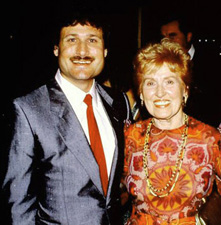
But the bigger event was Fantasy Film Worlds Of George Pal. The screening for that was at the Academy. Everyone in Hollywood came to see it. Every star that was in the film: Charlton Heston, Rod Taylor, Alan Young, Barbara Eden, Ray Bradbury, Gene Roddenberry, Bob Wise, Janet Lee, Ann Robinson, and most of Hollywood. All the directors were there – Joe Dante, John Milius, all the various filmmakers were there. That was the bigger event.
AV: Mrs. Pal must have been very gratified to see all that support for her husband.
AL: She was, she was. It was a big thing for her. What happened was, after George passed away, she was devastated for many years. She was not the same person. They were very much in love. George was her whole life, and he died very suddenly of a heart attack. I think there was a void in her life for a couple of years there. When I came back into her life a couple of years later, I think it revived things for her, all the things he had done with her over the years. So, yeah, it was a terrific thing for her. It brought it all back, which was emotional for her. That I know. So yes, it was gratifying for her with all the industry turning out. It was a wonderful period. It was, for me, it was the greatest thing that ever happened to me in my life. If it wasn’t for her, if it wasn’t for Mrs. Pal, none of it would have been possible, because she opened up these things for me. She allowed me to have access to all this, and all the people. Of course, George was so loved. It was the most amazing experience I ever had. I never had any experience even close, and most people will tell me this all the time, the response to George Pal in the industry was unlike anything that anyone had ever seen before. George was loved by everyone. He was a unique man. He had a wonderful sense of humor. He helped everyone in the industry, he had no ego. His ego was left at the door when it came to George. He always deferred credit to other people. He never took credit for things. It was always this person or that person. He was just that kind of person. If you ever see my film on Pal, the documentary…
AV: Oh, yes. I ‘ve watch it a few times.
AL: It comes through the people. I didn’t tell them what to say, they’re just talking. They couldn’t wait to talk about George. People ask me – I was on TCM, I get asked this all the time, I get this question a lot, so I’ll just answer it. They say, how did you get so many people, which is not easy to do. When you do these projects, you get one or two people. I got thirty. And the answer was that I had two magic words: George Pal. And people just couldn’t wait to talk about him, they were so emotional. People were crying. I mean, I never had an experience like this in my life. Because that’s why I talk about it the way I do. Because it’s real. It was an amazing experience.
AV: Having seen the film a few times myself, that really comes out. They say you should never meet your heroes, but it becomes clear that those who knew him really did consider him a hero. They loved him a lot.

AL: The funny thing about it is, a lot of people that love him – people who knew George Pal and people who never knew him – loved him. Because it comes through his work. I’m using The Time Machine as the best example because it is his greatest film for many reasons. There’s a love in there, because he loved what he was doing, and his love of doing things… As Ray Harryhausen had told me, about this contagiousness, his excitement of doing things that in turn made you excited. It was like, they loved him, and they loved what he was doing.
I can’t help but think about it. I think about how to be a better person, y’know; he was like a role model. Absolutely he was. In life, you have these people that exist in our civilization, and they are few and far between, these people that exist. And he was one of those great, great people. Now, I was very lucky because I met Walt Disney when I was twelve years old, and that was equally powerful, for some of the same reasons.

Because George Pal was a Walt Disney, he was his equal in stature. And of course, he and Disney were very close friends. And that helped me too, by the way, in my relationship with the Disney Studios, and my relationship with Roy Disney and the Nine Old Men at Disney, who had viewed all of the Puppetoons. Walt, y’know, was in awe of them, because (Pal) was using three-dimensionality in animation. This was during the Snow White period, and (Disney) wanted to create three-dimensional animation, and here George is doing it right before his eyes. He had all those films screened for all his animators, and I became friendly with four of the Nine Old Men: Ward Kimball, who did Jiminy Cricket, probably the greatest genius animator of the Disney studios; Marc Davis, who was Maleficent in Sleeping Beauty, and Tinkerbell; Frank (Thomas) and Ollie Johnson, who did Dumbo, and Bambi, and Fantasia… they all told me of viewing the Puppetoons, how they influenced their animation at the studio, and how this eventually led to Disneyland. The Puppetoons were animatronic, essentially. It’s A Small World is basically a Puppetoon, as many of them are.
And that comes from George. His influence is so vast, but so unknown to the public. But George would never himself promote himself in such a way. That was never his nature. He did it in his own quiet way. He was an artist in the truest sense of the word. He wasn’t a promoter. He wasn’t promoting himself. That was just his nature. So, again, that’s a big part of the story. There’s the man of George Pal, and he just happens to be a genius. So, it’s like he’s this incredible human being, who happens to be this incredible innovator and pioneer in special effects, stop-motion animation, and literally the father of science fiction and fantasy in modern film. So that’s a mouthful.
AV: That’s quite a legacy.
Do you remember discussing the Puppetoons with him when he was still alive?
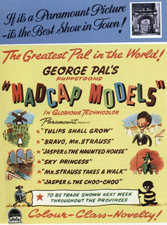
AL: The only thing I remember is that he had a number of things on his shelf. I now have some of the demonstration puppets that he had on display in his home. They were big enough that he could show them if he was with an audience. The actual Puppetoon puppets were tiny. I remember they were in the room while I was with him. So, I remember talking to him and seeing these sitting there. That’s the closest connection I had then. I never said anything to him about it.
I’ll be bringing these demonstration puppets with me to LA. Next week, I’m going to LA. Joe Dante is going to interview me for his Trailers From Hell. It’s a George Pal week. We’re going to show trailers from all George’s films, and he’s going to promote the Puppetoons Volume 2. (The photo below was taken during that meeting.)
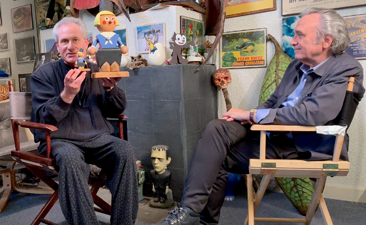
AV: Were you involved in initiating the process of bringing the first Puppetoon Movie to Blu-ray?
AL: No, actually, a distributor, B2MP, came to me. The fellow, his name is Bruce Venezia, he was the Vice Present of Acquisitions for image Entertainment. They released my films prior to this. They did the box set, they did the Fantasy Film Worlds re-release on DVD… they already had done it on LaserDisc, and then they did a DVD of it. They did The Puppetoon Movie. They had a Laser then they had a DVD. So, he was wanting to do projects, and he said we should do this. So, he initiated it, he put it together. And I then helped him with all the materials, getting him the negatives, and the whole process of doing it.
AV: Was it always part of the plan to include the documentary on the Blu-ray, or was it something that you pushed for?
AL: He had suggested doing that; and I, well, I would have liked to have done it separately, but I don’t think it’s possible to get these things done on home media anymore. The market isn’t there for it. So, I used it as an opportunity to get it put on the Blu-ray, basically.
AV: I’m glad it’s at least there in the bonus material.
AL: I don’t consider it bonus material, that’s the whole thing. It really is the film that means the most to me, more than The Puppetoon Movie does; because it explains what he represents in the whole scheme of things. It’s an epic story. When I did The Puppetoon Movie, I wanted it to play as a movie, I didn’t want to have it play like a documentary. That’s why I made the decision to do the new material. It had Gumby, because he was the most well-known character. He still is. He’s the most popular stop motion character who’s ever been done. If you say to someone, “There’s Gumby,” they know immediately what that is. There aren’t many characters that are iconic characters, that were done in frame-by-frame hand animation. You could list them on one hand, there aren’t that many. So, I wanted to use something that the audience would recognize to get them into this Pal thing, to do it in a short way. I didn’t want to make it into a big documentary. I wanted people to see the Puppetoons. So, that’s basically why I did it that way. It was quite an undertaking to do an all-animation sequence. As I said, it’s no easy accomplishment. It’s the first time that Gumby was shot on film using widescreen color. It was never done before. As well as Speedy Alka Seltzer, the Pillsbury Doughboy. None of those characters was ever shot in that format before.
With Speedy Alka Seltzer, it was the first time he was ever shot in color. He was always in black and white in commercials. It was actually a replacement puppet that was shot at the end. Miles Laboratories actually came to the set to document it with the Smithsonian in Washington. They came out with a whole troupe of people from Washington to document it for historical purposes, because it had never been done before. It’s an actual replacement puppet. Miles Laboratories had thought it was lost, and they actually found it in Australia and they brought it to be animated. There’s a lot of interesting history about that segment.

AV: When you did the first Puppetoon Movie, I think you used Mrs. Pal’s prints, did you not?
AL: I used Mrs. Pal’s prints.
AV: For Volume 2, what are your sources this time?
AL: For (the first Puppetoon Movie), Mrs. Pal didn’t have all the films. I would have used some of these if she had them. All of the European films that I have, she had none of them. There are twenty films that are either going to be in Volume 2, or Volume 3. I’ll have to separate them, there’s too many films. None of those she had. And Wilbur The Lion will be on it, which she didn’t have. No one had it. A print hadn’t existed until it was just turned up by a collector, like a year and a half ago. He contacted me, and said he had a nitrate print of Wilbur The Lion. I couldn’t believe it. I had been looking for it for it for 35 years. I didn’t have it, UCLA didn’t have it, Mrs. Pal didn’t have it.

Some of the films we’ll be getting from Paramount. There’s six of them that have been restored from the three-strip successive negative; they’re already done. I’m going to get to use those. And there are probably four or five that I’m going to use from the Library of Congress. I’m making scans and getting restorations done. The problem is there’s too many films for one volume. Steve Stanchfield and Jerry Beck and everyone I talk to says you have to keep it to about 15 films, then you do another 15 films. And I have to, because it’s too expensive So, there will be about 15 films, basically.
AV: Are Volume 2 and subsequent volumes going to be straight-forward compilations, then?
AL: Yes, just the films themselves.
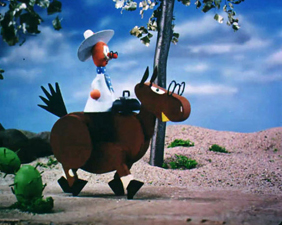
AV: No more Arnie the Dinosaur?
AL: No more Arnie the Dinosaur. I wish there could be, but it’s unaffordable to do it.
AV: And the elements from Europe: What type are they?
AL: They’re original nitrates. Every one of them is a nitrate. Every single film is a 35mm nitrate print. Again, I consider that to be amazing, considering no knew they existed after all these years. It’s unbelievable. They’re amazing to see. You’re not going to believe it.

AV: On the first Puppetoon Movie Blu-ray, there were a number of bonus Puppetoons included, though many were still shown in standard definition. Are any of the standard definition ones being upgraded to high definition for the new compilation?
AV: Some of them will, yes. I’m not going to be doing them all for this set, but I want to do Jasper And The Haunted House. I’m doing Aladdin. Ether Symphony is being upgraded from a successive negative. Paramount’s done it. My basic feeling is that I don’t want too much repetition on the next set. If people have already seen some of these things, I’d rather the next one be fresh. I want to keep it as fresh as possible. I would say that 95% of what’s on Volume 2 is totally new. The only one that’s possible would be maybe Aladdin.
AV: Aside from lending you the prints, is Paramount providing any other support?
AL: No financial support. The support they’re doing is they’re providing access to the material. And because I own the trademark of the Puppetoons, it’s a bit of a quid pro quo that’s involved in this. First of all, it’s a big deal to begin with. When I did my two-day tribute to Pal with Ben Mankiewicz (on Turner Classic Movies), that same day as I was doing it, Jim Gianopulos, who’s the president of Paramount, was doing a piece with Mankiewicz for the Motion Picture Home. He did, like, a special thing for three or four nights promoting the Motion Picture Home, for the actors. So, I met him. It was an important introduction, and I stayed in touch with him. I told him what I’d like to do with the Puppetoons, as I had met with a lot of resistance for many years. He’s very much a film historian. He believes in preservation. He believes in industry things. So, for about a year and a half, I stayed in touch with him. Eventually, he opened up the studio for me to be able to have access to the Puppetoons. It took over a year, but it’s because of the chairman, that he’s letting me do it.
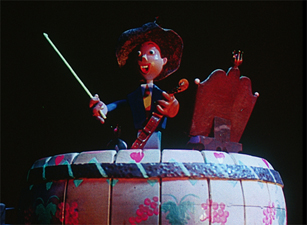
AV: Is the project far enough along that you have distributor details yet?
AL: I’m going to do it myself, with Stanchfield. We have the promotional webpage, the funding page, and hopefully that page will also be selling it for a price. I don’t know what it’s going to be yet. Stanchfield will probably sell it. I want to be able to get my money back, whatever I’ve spent, so that I can put it into the next volume, as much as I can. But I’m still going to need, possibly, to fundraise. Once I have been able to get enough, then there’s a distributor that I’ve talked to who will do it. I’ve already discussed it with them. But I want to be able to get back so much, then I’ll go with a distributor. I don’t want to do it initially, I want to wait a little bit, because they take a percentage.
AV: I have a question about Jasper. Despite him having appeared in around half of the Puppetoons, there wasn’t much of him in the first movie; but it looks like you may be featuring him more the second time around. Has anything changed that allows you to use him more in the next volume?
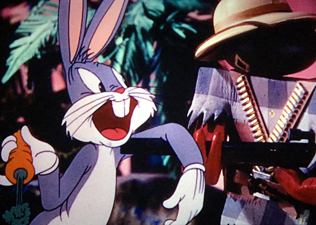
AL: What we’ll likely be including will be Jasper Goes Hunting. It’s one of the restored subjects. ASIFA is involved here. I’m friendly with Jerry Beck, who’s the president of the society. I’ve known Jerry for 35 years. And he’s a big Puppetoon fan. And I said to him that maybe he could get them to help me restore some of these, and ASIFA paid for two of them to be restored this past year. They’re very expensive to do, just to do the restorations of each film. They did Jasper Goes Hunting, and Hatful Of Dreams. Jasper Goes Hunting is the one that featured Bugs Bunny, which is why he wanted to do it. Hatful Of Dreams features Superman, which was his only use outside of the Fleischer films at that time. It was the only time that Warner Bros. ever allowed Bugs Bunny to feature in another entity’s film, until many years later in Roger Rabbit. It was the first time that anyone was able to use other characters in their film. Now Lord and Miller have done it, but for all those years the only one to do it was George Pal. Superman appears in Hatful Of Dreams not as Superman, but Punch is dressed as Superman, with the big ‘S’ and he flies and everything.

There’s one Jasper I kind of like: it’s called Jasper’s Close Shave. I like it a lot because of the use of music in it. It uses “Barber Of Seville.” This was before Walter Lantz used it in the Woody Woodpecker cartoon. It’s a very frenetic piece of music. I like that one.
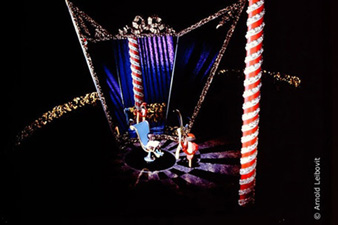
Yes, you were pointing out an issue. The stereotypic portrayal in the cartoons does in my view present a problem. I lot of people have said, “just release them.” I’m a little concerned. I don’t want to put more than a couple of them (on Volume 2). I was thinking we’d put on a couple more in Volume 3, and maybe the balance on Volume 4. But I need to have context created. There are a couple professors I know who have written articles about it. I might want them to express their opinion on it. Because the fourth one would be primarily Jaspers, but I’m a little worried about it personally.
AV: With Bugs Bunny appearing, and the iconography at least of Superman, did you need any cooperation from Warner Bros. now to present these films again?
AL: No, no. They’re a part of those films.
AV: Aside from the Puppetoons, are you an animation fan in general?
AL: Oh, yes. Oh my God. Disney and Warner Bros. cartoons primarily. I’m more in love with Disney feature animation. I’m not a big fan of Mickey Mouse cartoons or Donald Duck cartoons. I’m not a fan of Disney (shorts). It’s just certain cartoons, Sorcerer’s Apprentice, maybe Mickey And The Beanstalk. Some of the Silly Symphonies are really outstanding. I’m really a fan of the Warner Bros. cartoons for obvious reasons. I consider them to be the best. And Tex Avery has a very special place, Bob Clampett has a very special place, and to me the early Warner Bros. cartoons are very important. The Fleischer cartoons are very important for a variety of reasons.
Y’know, Pal was supposed to work with Fleischer. The way that was supposed to work, Fleischer was in Florida making the films, and when Pal went to work in the United Sates, he had the choice. Paramount was saying, y’know, we have this unit down in Florida doing Popeye and Betty Boop and these types of things, so they were thinking Pal could go there and set up. But George Pal and Mrs. Pal wanted to be in Hollywood and be in the heart of it. Plus, Pal had met Walt Disney, and that’s where he wanted to be. But there was talk for a time that he was going to be working for Fleischer. Of course, as it turned out, Pal ended up getting an Academy Award for the Puppetoons. Fleischer never got an Academy Award. So, it’s kind of interesting. Pal really got more accolades for the Puppetoons than Fleischer ever got for doing his cartoons. Part of it is that what Pal was fond of doing was so different from the other animators. It’s a very competitive business, everyone’s very competitive. But when Pal came, he was so different from anyone; he was embraced by the animation community in a very unique way. Plus, his personality and being the kind of person he was, it didn’t take long for them to realize everything I’ve just told you about him.
He and Walt Disney were close friends, they would talk all the time, and they would trade animators. A couple of the animators, Fred Moore being the most well-known, came over to the Puppetoon studio. Punch and Judy were his design, that was one example. It’s just an interesting factoid that people don’t know. Plus, Ray Harryhausen’s first job was with the Puppetoons, as you know. Willis O’Brien from King Kong worked on the Puppetoons. Gene Warren and Wah Chang were there. A lot of very well-known animators were there.

AV: You mentioned meeting Walt Disney when you were twelve. How did that happen?
AL: Oh, Disneyland. He was there. Basically, my whole day stopped, I remember the day vividly. I was with my mother and my brother and the family, then Disney came into the picture that day. I just wanted to be with him. I followed him around the park. He used to take his grandkids with him to Disneyland on the weekend. He was there a lot back then, especially on the weekends. That day, if he was on the monorail, then I was there on the monorail. I was sitting practically right next to him. And I was around the park, you know. But he loved the park, he loved talking to people. That was the most important thing in his life, was Disneyland; that was bigger than the movies for him. In fact, the movies really took second place. Marc Davis was telling me that with Sleeping Beauty, Walt was involved but he backed away from the project. He was just so involved in Disneyland. I would say he was spending 70% of his time at Disneyland, and that continued until he died. Even when Walt died, when he was in the hospital, Roy Disney Sr., his brother, came over to the hospital. They knew he was going to die. Roy was in the hospital room, rubbing Walt’s feet, right before he died, because he was in such pain. And even in all that, Walt was telling Roy things while looking up at the ceiling. And he was talking about EPCOT. He was telling him where he wanted everything, where he wanted the train. He was talking about it on his deathbed. It was so important to him to do that. So, I’m just saying, that was the most important thing in his life
AV: Is there anything else you would like to say about your project?
AL: Well, the most important thing is that we do need support for The Puppetoon Movie Volume Two. I haven’t gone big-time into social media with it. I have a Facebook page. I’ve basically raised 8 or 9 thousand dollars. I need more money, as much as I can get. I need many times that. I’m hoping that what you’re doing will contribute to getting more people to contribute. It’s a race against time to preserve these things before they’re lost forever This will include never-before-seen Puppetoons. It’s really important preservation work. We’re going to screen them at the Academy. They’ll be screened at the Museum Of Modern Art. They’ll be screened at various venues around the country. I’ll be trying to put on some sort of shows, probably with Jerry. It’s not just the release, it’s getting them seen.
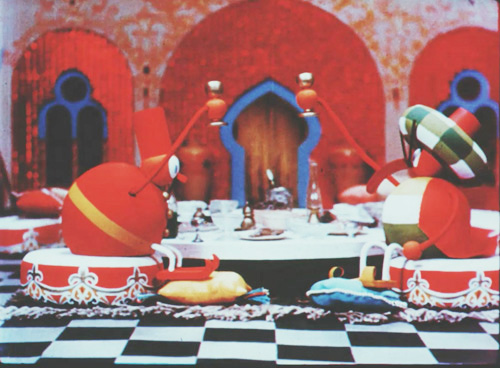
It’s a big undertaking. That’s’ the biggest help, is just getting it promoted. That’s my biggest need is getting it out there. I would like to get the word out, and maybe get them all done.
Many thanks to Mr. Leibovit for chatting with us! To support The Puppetoon Movie Volume 2 project, please visit his website at www.scifistation.com/puppetoon2.html. And spread the word!
